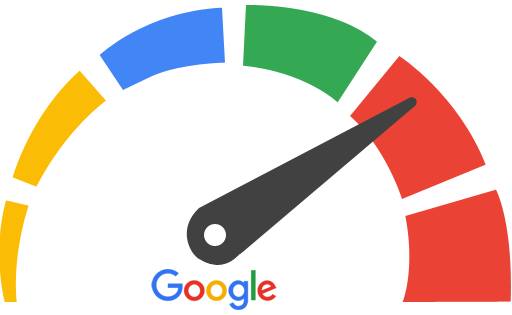
AMP stands for Accelerated Mobile Pages and it is the next stage in delivering the best user experience for mobile users.
In 2015, Google introduced the mobile friendly standard. This meant that a website had to be configured differently depending on the size of the display that it was being viewed on. The fonts need to be bigger, links easily clickable and so on.
A mobile friendly testing tool was created and Google began to give preference to mobile friendly sites in its search results. With the rise of mobile usage over the last couple of years in particular, ranking well in mobile search is now even more important than desktop search because almost 70% of all web usage is done on a mobile device!
But now Google has gone one step further and introduced AMP. This was actually first created back in February of 2016 but it didn’t have very much impact on SEO rankings until September. But first, let’s discuss what AMP actually is, and why Google feels it is necessary.
When you use the Internet on a desktop computer you are most likely using some kind of un-metered connection. In other words you don’t have to pay for your bandwidth. Most mobile users on the other hand have to pay for every byte of data they download and this cost is added to their phone bill.
Websites used to be just text and graphics but nowadays rich media is prevalent and you can barely move two clicks online without encountering some kind of streaming media, animated or interactive content or massive background graphics that occupy the entire screen.
On a desktop, you’d barely blink an eye but if you’re trying to browse such a page on your phone, all that rich media is eating your bandwidth, making the page slow to load and costing you money.
When people search for something in Google they are often looking for information and all that flashy stuff is not really needed.
AMP is a minimalist standard that strips web pages back to their bare essentials of just text, images and hyperlinks. Thus they are quick to load, they take the user directly to the content and they use up the minimum amount of data.
AMP pages are actually separate to the regular web pages which will still display normally on desktops.
From September 2016, Google will now display the AMP version of a page to a mobile user if it is available, and will give preference in the search results to pages that have AMP versions.
What this means for SEO is that if you are not using AMP, your rankings are likely to drop! If you have a WordPress site and would like to get AMP installed very quickly and cheaply, you can contact Caroline Middlebrook who runs an SEO agency in Bury St Edmunds in Suffolk, UK.


Рекомендации по безопасной покупке диплома о высшем образовании
можно ли купить аттестат за 9 класс сколько стоит
Надёжные каркасные дома: безопасность вашей семьи прежде всего
каркасный дом санкт петербург karkasnye-doma178.ru .
Аттестат 11 класса купить официально с упрощенным обучением в Москве
Каркасный дом: от проекта до сдачи под ключ с гарантией и качеством
каркасные дома под ключ в спб цены https://karkasnye-doma-pod-kluch178.ru .
купить диплом ставропольский край
online pharmacies
casino 1win 1win2.md .
1win сайт casino-o.pro 1win3.md .
накрутка просмотров Твич бесплатно накрутка просмотров Твич бесплатно .
Как приобрести аттестат о среднем образовании в Москве и других городах
Canada Pharmacy 24 Hour Drug Store Price of viagra 100mg walmart blackcialis.net
Viagra from mexico pharmacy
Каркасный дом для вашего участка: проекты и цены 2025 года
каркасные дома спб karkasnye-doma-pod-kluch178.ru .
canadian pharmacy
купить диплом москва чистый
купить диплом оценщика
Когда речь идет о ремонте, выбор правильной краски — это один из самых важных этапов. Строительные краски не только придают вашему интерьеру стильный вид, но и защищают поверхности от внешних воздействий. Мы предлагаем широкий ассортимент высококачественных строительных красок, которые удовлетворят потребности как профессиональных строителей, так и домашних мастеров – краска вгт для внутренних работ.
Купить диплом Иркутск
Получите моментальный займ без предоставления фото паспорта, средства поступят на вашу карту в кратчайшие сроки.
Займы быстро без отказа без фото https://www.niasam.ru/vklady__kredity__kreditnye_karty/zajm-bez-foto-pasporta-udobstvo-i-vazhnye-momenty-248466.html/ .
Квиз — это увлекательная игра-викторина, которая сочетает в себе элементы развлечения и интеллектуального состязания. Они могут проходить в различных форматах: от настольных игр до онлайн-викторин и живых мероприятий в кафе или клубах. Популярность квизов растет, поскольку они позволяют людям не только проверить свои знания, но и провести время в компании друзей или незнакомцев, создавая атмосферу дружеского соперничества – квиз в москвее
накрутка Твич накрутка Твич .
сайт для накрутки подписчиков в ТГ канал сайт для накрутки подписчиков в ТГ канал .
Полезные советы по безопасной покупке диплома о высшем образовании
Refining the Design and Adding Details
Exporting and Sharing My Design
sibpromholod.ru
B5XvZR9ny
Assessing the SpaceтБЪ Measuring and Planning
Clever Storage SolutionsтБЪ Utilizing Every Nook and Cranny
first medicine online pharmacy store
canadianhealth
1win лаки джет http://www.1win1.com.kg/ .
диплом о среднем профессиональном образовании где купить
Каркасный дом: узнайте секреты строительства от профессионалов, которые знают все о надежности и стиле
каркасный дом спб http://www.spb-karkasnye-doma178.ru/ .
lasik online pharmacy no script Albendazole for sale
купить диплом бланки аттестата
canadian pharcharmy online Pharmacy On Line Canada pharmacy 24h
Каркасный дом под ключ: от идеи до заселения
каркасный дом спб https://www.karkasnye-doma-spb178.ru/ .
Как купить аттестат 11 класса с официальным упрощенным обучением в Москве
Supremesuppliers http://canadian24hourpharmacy.com/ How to order viagra from canada
Купить диплом специалиста в Иваново
онлайн казино на реальные деньги с бонусом за регистрацию 1win2.com.kg .
купить диплом учителя физкультуры 2orik-diploms.ru .
Где оформить временную регистрацию в Москве: Как выбрать надёжную компанию
временная регистрация цена rega-msk99.ru .
Need money? Get it here easily?] toper 🙂 https://topinnews.info/
Купить диплом магистра оказалось возможно, быстрое обучение и диплом на руки
Try best ai pet photo on Hyperspace.
купить диплом гэити prema-diploms.ru .
купить аттестат повара
реально купить диплом в уфе 2orik-diploms.ru .
sky pharmacy review
регистрация 1вин http://1win1.am/ .
1win букмекер 1win букмекер .
http://fixprinter.ru/bitrix/redirect.php?goto=https://t.me/s/bonus_za_registratsiyu_bez_depa
куплю международный диплом prema-diploms.ru .
Быстрая схема покупки диплома старого образца: что важно знать?
купить диплом колледж
купить диплом документ
Быстрое обучение и получение диплома магистра – возможно ли это?
Купить диплом парикмахера – скромная инвестиция в большое будущее
Полезная информация как официально купить диплом о высшем образовании
R777 app download R777 app download .
KU9 vip KU9 vip .
KU9 apk KU9 apk .
официальный сайт 1win http://www.1win2.am .
законно ли купить диплом
Процесс получения диплома стоматолога: реально ли это сделать быстро?
Как безопасно купить диплом колледжа или ПТУ в России, что важно знать
купить аттестат в керчи
Быстрый вызов мастера сантехника на дом
вызов сантехника на дом https://vizov-santehnikavspb.ru .
диплом купить в ставрополе
Be the first to receive the official Trump Memcoin and join our community
Join the Trump Community. This is History in the Making!
$TRUMP are now freely tradeable on the blockchain.
Claim Airdrop $TRUMP NOW
You personal promocod – “999hka”
Как купить аттестат 11 класса с официальным упрощенным обучением в Москве
Купить диплом о среднем полном образовании, в чем подвох и как избежать обмана?
Машинка на пульте: почему дети и взрослые обожают наши товары – убедитесь сами
машины с пультом управления https://wildberries.ru/catalog/281617142/detail.aspx .
купить диплом с проверкой
купить диплом кандидата было купить диплом кандидата было .
отите|Желаете|Мечтаете] получить есплатный|даровой|халявный] NFT? ?? Участвуйте в озыгрыше|акции|лотерее] от loveshop “Пушистые льдинки”! ?? одробности здесь|Узнать больше можно тут|Вся информация по ссылке] –
https://love-shop-1300.homes/?city_id=47
#Love-Shop #loveshop1300-biz # shop1-biz #loveshop13 #loveshop15 #loveshop16
Услуги сантехника без посредников – честные цены, быстрый выезд
сантехник спб недорого сантехник спб недорого .
Как получить диплом техникума официально и без лишних проблем
1win new http://www.1win1.ug/ .
1win registration http://www.1win2.ug .
купить диплом электроэнергетика 2orik-diploms.ru .
купить чистый бланк аттестата
Добрый день!
Для некоторых людей, купить диплом университета – это необходимость, возможность получить достойную работу. Но для кого-то – это желание не терять огромное количество времени на учебу в институте. Что бы ни толкнуло вас на такое решение, наша фирма готова помочь вам. Оперативно, качественно и по разумной цене изготовим документ любого ВУЗа и любого года выпуска на подлинных бланках с реальными печатями.
Главная причина, почему люди прибегают к покупке документа, – получить определенную работу. Допустим, знания позволяют специалисту устроиться на желаемую работу, а документального подтверждения квалификации нет. Когда работодателю важно наличие “корочек”, риск потерять вакантное место достаточно высокий.
Купить документ о получении высшего образования можно в нашем сервисе. Мы предлагаем документы об окончании любых ВУЗов РФ. Вы получите необходимый диплом по любым специальностям, включая документы Советского Союза. Даем 100% гарантию, что в случае проверки документов работодателем, никаких подозрений не появится.
Обстоятельств, которые вынуждают приобрести диплом немало. Кому-то срочно нужна работа, в результате необходимо произвести впечатление на начальника в процессе собеседования. Некоторые задумали попасть в большую компанию, для того, чтобы повысить собственный статус и в последующем начать собственное дело. Чтобы не терять драгоценное время, а сразу начинать успешную карьеру, применяя врожденные таланты и приобретенные навыки, можно приобрести диплом через интернет. Вы сможете стать полезным для общества, обретете финансовую стабильность в максимально короткий срок.
купить аттестат за 9 класс
купить настоящий диплом с занесением в реестр
Добрый день!
Руководители серьезных фирм часто предпочитают претендентов, которые закончили высшее учебное заведение. Особенно в приоритете элитные учебные заведения. Впрочем учиться пять лет – это дорого, далеко не у каждого присутствует подобная возможность. Купить документ становится самым выгодным решением.
Бывают и непредвиденные случаи, когда диплом об окончании ВУЗа потерян. Не всегда возможно быстро и без проблем восстановить его, особенно когда ВУЗ закрыт или находится далеко в другом регионе России. Бюрократические проблемы отнимут массу времени.
Для эффективного продвижения по карьерной лестнице понадобится наличие диплома ВУЗа. Однако нередко в жизни может случиться так, что определенные обстоятельства не позволяют с успехом окончить учебу и заполучить желанный документ.
Приобрести диплом любого университета
Наши специалисты предлагают быстро и выгодно купить диплом, который выполняется на бланке ГОЗНАКа и заверен печатями, водяными знаками, подписями. Диплом пройдет лубую проверку, даже при помощи профессионального оборудования. Достигайте своих целей быстро и просто с нашей компанией.
Где заказать диплом по актуальной специальности? tutdiploms.com
Диплом вуза купить официально с упрощенным обучением в Москве
купить диплом о высшем цена
купить диплом дополнительном образовании prema-diploms.ru .
купить педагогический диплом
Здравствуйте!
Где купить диплом по актуальной специальности?
Мы можем предложить дипломы психологов, юристов, экономистов и прочих профессий по выгодным ценам. Стоимость будет зависеть от выбранной специальности, года выпуска и образовательного учреждения. Стараемся поддерживать для заказчиков адекватную ценовую политику. Важно, чтобы документы были доступны для большого количества граждан.
Заказ диплома, подтверждающего обучение в ВУЗе, – это выгодное решение. Для сравнения просто подсчитайте, сколько вам пришлось бы вложить своих денег на оплату 5-летнего обучения, на аренду квартиры (если студент иногородний), на проезд до университета и обратно. Получится очень серьезная сумма, которая значительно превышает цены на нашу услугу. А ведь все это время можно уже успешно работать, продвигаясь по карьере.
Получаемый диплом с приложением отвечает требованиям и стандартам, никто не отличит его от оригинала – даже со специально предназначенным оборудованием. Не откладывайте личные мечты на несколько лет, реализуйте их с нашей компанией – отправляйте заявку на диплом уже сегодня!
Диплом о среднем специальном образовании – быстро и легко! rdiploms.com
Профессиональные услуги сантехника по установке и ремонту инженерных систем
услуги сантехника в спб услуги сантехника в спб .
купить готовый диплом казань
Free cover letter generator with downloadable PDF and DOCX files
ai generator cover letter ai generator cover letter .
The huge income without investments is available, now!] 🙂 https://topinnews.info/
Добрый день!
Заказ документа о высшем образовании через надежную компанию дарит ряд достоинств для покупателя. Такое решение помогает сберечь как длительное время, так и серьезные финансовые средства. Однако, плюсов гораздо больше.Мы можем предложить дипломы любой профессии. Дипломы производятся на подлинных бланках. Доступная цена по сравнению с крупными затратами на обучение и проживание. Покупка диплома об образовании из российского института будет разумным шагом.
Быстро купить диплом о высшем образовании: onmogul.com/anton-sobolev
Купить аттестат школы
casino зеркало casino зеркало .
Официальная покупка диплома ПТУ с упрощенной программой обучения
купить диплом московская область
Легальная покупка диплома о среднем образовании в Москве и регионах
1win login nigeria 1win login nigeria .
mostbet app компания разработала официальное мобильное приложение https://www.mostbet100.com.kg .
купить диплом в искитиме 2orik-diploms.ru .
Try best futuristic photo on Hyperspace.
Try best portrait generator from photo on Hyperspace.
Круглозвенные цепи — это не просто элемент механики, а настоящая находка для бизнеса! Они широко используются в различных отраслях: от сельского хозяйства до строительства, обеспечивая надежную передачу усилия и долговечность – https://allmedia.ru/Articles/show.asp?ID=1936 – роликовые подшипники купить
отите|Желаете|Мечтаете] получить есплатный|даровой|халявный] NFT? ?? Участвуйте в озыгрыше|акции|лотерее] от Mega “M3GA-AT”! ?? Подробнее
https://m3ga-gd.sbs
#megaweb3 #megaweb15-at #megaweb8 #megaweb14-at #M3GA-AT #M3GA-GL
Когда речь идет о ремонте, выбор правильной краски — это один из самых важных этапов. Строительные краски не только придают вашему интерьеру стильный вид, но и защищают поверхности от внешних воздействий. Мы предлагаем широкий ассортимент высококачественных строительных красок, которые удовлетворят потребности как профессиональных строителей, так и домашних мастеров – https://criminalrussia.ru/novosti/4486-kraska-alpina-nemeckoe-kachestvo-i-dolgovechnost-v-kazhdom-pokrytii.html – краска альпина.
отите|Желаете|Мечтаете] получить есплатный|даровой|халявный] NFT? ?? Участвуйте в озыгрыше|акции|лотерее] от Mega “M3GA-AT”! ?? Подробнее
https://mega-link.work/poplnet_balance_hydra2019/policyuser/acii_hydra/
#megaweb3 #megaweb15-at #megaweb8 #megaweb14-at #M3GA-AT #M3GA-GL
Сертификат ТР ТС – документ, подтверждающий безопасность продукции и соответствие требованиям
конкретного технического регламента Таможенного Союза. Быстро оформим https://ural-news.net/other/2025/03/07/502347.html – сделать декларацию соответствия на продукцию
Квиз — это увлекательная игра-викторина, которая сочетает в себе элементы развлечения и интеллектуального состязания. Они могут проходить в различных форматах: от настольных игр до онлайн-викторин и живых мероприятий в кафе или клубах. Популярность квизов растет, поскольку они позволяют людям не только проверить свои знания, но и провести время в компании друзей или незнакомцев, создавая атмосферу дружеского соперничества – квиз для взрослых
Квиз — это увлекательная игра-викторина, которая сочетает в себе элементы развлечения и интеллектуального состязания. Они могут проходить в различных форматах: от настольных игр до онлайн-викторин и живых мероприятий в кафе или клубах. Популярность квизов растет, поскольку они позволяют людям не только проверить свои знания, но и провести время в компании друзей или незнакомцев, создавая атмосферу дружеского соперничества – https://about-windows.ru/raznoe/kvizy-v-moskve-intellektualnoe-razvlechenie-s-kviz-raspisaniem/ – квиз расписание
отите|Желаете|Мечтаете] получить есплатный|даровой|халявный] NFT? ?? Участвуйте в озыгрыше|акции|лотерее] от Mega “M3GA-AT”! ?? Подробнее
https://m3ga.quest/2024/04/15/%d1%84%d0%b5%d0%b4%d0%b5%d1%80%d0%b0%d1%86%d0%b8%d1%8f/
#megaweb3 #megaweb15-at #megaweb8 #megaweb14-at #M3GA-AT #M3GA-GL
Когда речь идет о ремонте, выбор правильной краски — это один из самых важных этапов. Строительные краски не только придают вашему интерьеру стильный вид, но и защищают поверхности от внешних воздействий. Мы предлагаем широкий ассортимент высококачественных строительных красок, которые удовлетворят потребности как профессиональных строителей, так и домашних мастеров – https://aae.su/kraska-dlya-vnutrennih-rabot-kak-vybrat-i-na-chto-obratit-vnimanie-pri-pokupke.html – краска для внутренних работ.
отите|Желаете|Мечтаете] получить есплатный|даровой|халявный] NFT? ?? Участвуйте в озыгрыше|акции|лотерее] от Mega “M3GA-AT”! ?? Подробнее
https://m3ga-gd.top
#megaweb3 #megaweb15-at #megaweb8 #megaweb14-at #M3GA-AT #M3GA-GL
отите|Желаете|Мечтаете] получить есплатный|даровой|халявный] NFT? ?? Участвуйте в озыгрыше|акции|лотерее] от LoveShop “Shop1-biz”! ?? Подробнее
https://loveshop1300.hair/bonus/index.html
#loveshop1300-biz # shop1-biz #loveshop13 #loveshop15 #loveshop16 #loveshop17 #loveshop18
отите|Желаете|Мечтаете] получить есплатный|даровой|халявный] NFT? ?? Участвуйте в озыгрыше|акции|лотерее] от LoveShop “Shop1-biz”! ?? Подробнее
https://shop1300.top/elements/index.htm
#loveshop1300-biz # shop1-biz #loveshop13 #loveshop15 #loveshop16 #loveshop17 #loveshop18
отите|Желаете|Мечтаете] получить есплатный|даровой|халявный] NFT? ?? Участвуйте в озыгрыше|акции|лотерее] от LoveShop “Shop1-biz”! ?? Подробнее
https://loveshop1300.top/agb.html
#loveshop1300-biz # shop1-biz #loveshop13 #loveshop15 #loveshop16 #loveshop17 #loveshop18
отите|Желаете|Мечтаете] получить есплатный|даровой|халявный] NFT? ?? Участвуйте в озыгрыше|акции|лотерее] от LoveShop “Shop1-biz”! ?? Подробнее
https://loveshop1300.cfd/index.html
#loveshop1300-biz # shop1-biz #loveshop13 #loveshop15 #loveshop16 #loveshop17 #loveshop18
отите|Желаете|Мечтаете] получить есплатный|даровой|халявный] NFT? ?? Участвуйте в озыгрыше|акции|лотерее] от LoveShop “Shop1-biz”! ?? Подробнее
https://loveshop1300.hair/post/markdown-syntax/index.html
#loveshop1300-biz # shop1-biz #loveshop13 #loveshop15 #loveshop16 #loveshop17 #loveshop18